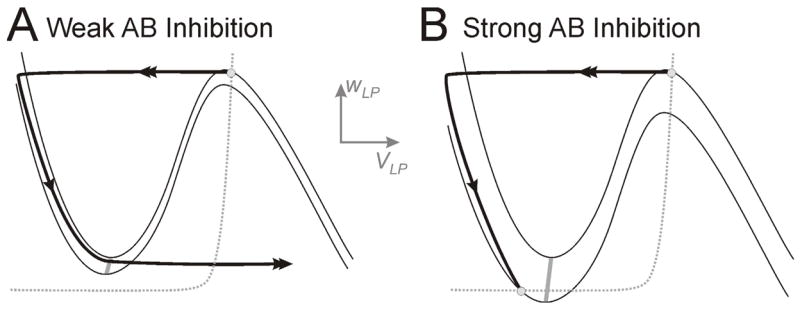Fig. 3.

The influence of AB inhibition on the dynamics of LP.A. The inhibition from AB to LP causes LP to return to the silent state, but is too weak to affect the time that LP spends in this state. Note the lack of intersection of the v- (solid) and w-nullclines (dotted) along the left branches. B. The inhibition from AB is strong and creates a fixed point on the left branch of the v-nullcline. In this case LP must wait for AB inhibition to decay, thereby allowing the stable fixed point (lower white circle) to disappear before it can jump to the active state. White circles indicate stable fixed points. The two v-nullclines in each case indicate no (upper) or maximal (lower) inhibition from AB to LP. The gray curve is the LP jump curve.
